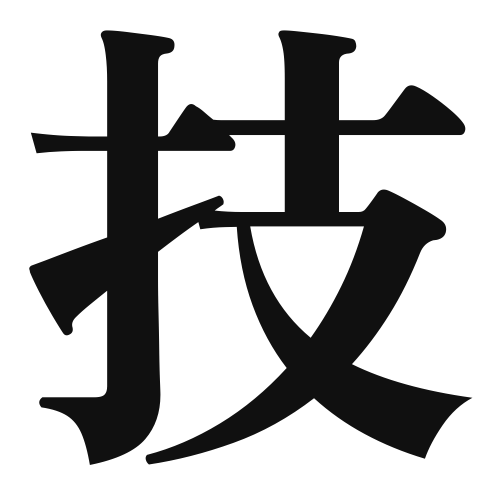1. Overview of Meaning
The kanji “技” (pronounced “gi”) means “skill” or “technique.” It refers to the ability to perform tasks with proficiency, often in a specific field such as art, sports, or craftsmanship.
2. Formation and Radical
The kanji “技” is a compound character that combines elements to convey its meaning. It is made up of the radical 扌 (hand) on the left, which indicates actions performed by hand, and the character 技 itself, which relates to skill or technique.
The radical 扌 is commonly associated with actions involving hands, emphasizing the physical aspect of skill and technique.
3. Examples of Usage
Common words and phrases that include “技” are:
- 技術 (ぎじゅつ, gijutsu) – technology or technique
- 技師 (ぎし, gishi) – engineer or technician
- 芸技 (げいぎ, geigi) – performing arts skills
Example sentences in daily conversation:
- 彼は料理の技術が素晴らしいです。
(He has excellent cooking skills.) - この技はとても難しいです。
(This technique is very difficult.)
4. Synonyms and Antonyms
Similar kanji with related meanings include:
- 技術 (ぎじゅつ, gijutsu) – technology, which emphasizes the application of skills in practical contexts.
- 技芸 (ぎげい, gigei) – art or performance skills, focusing more on artistic expression.
Antonyms include:
- 無能 (むのう, munou) – incompetence, which indicates a lack of skill or ability.
5. Cultural and Historical Background
The kanji “技” is deeply rooted in Japanese culture, where skill and craftsmanship are highly valued. Traditional arts such as calligraphy, tea ceremony, and martial arts emphasize the importance of mastering techniques.
Proverbs and idiomatic expressions related to “技” include:
- 技は身を助ける (ぎはみをたすける, gi wa mi o tasukeru) – “Skill saves oneself,” highlighting the importance of skill in overcoming challenges.
